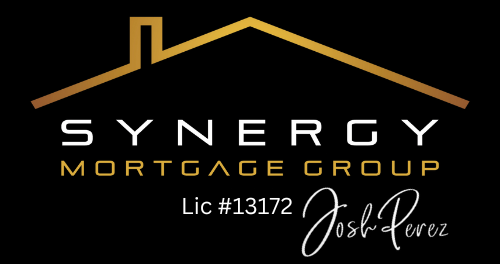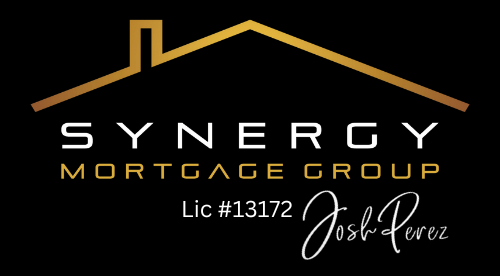Articles to keep you learning

By Josh Perez
•
April 2, 2025
You’d think an online calculator is a pretty straightforward device, one that you should be able to place your confidence in, and for the most part, they are. Calculators calculate numbers. The numbers are reliable, but how you interpret those numbers, not so much, especially if the goal is mortgage qualification. If you rely on the numbers from a “What can I afford” or “Mortgage Qualification” calculator without talking to an independent mortgage professional, you’re going to be misinformed. Don’t be fooled. Even though an online mortgage calculator can help you calculate mortgage payments or help you assess how additional payments would impact your amortization, they’ll never be able to give you an exact picture of what you can afford and how a lender will consider your mortgage application. While mortgage calculators are objective, mortgage lending isn’t. It’s 100% subjective. Lenders consider your financial situation, employment, credit history, assets, liabilities, the property you are looking to purchase. Then, they will compare that with whatever internal risk profile they are currently using to assess mortgage lending. Simply put, they don’t just look at the numbers. An online calculator is a great tool to help you run different financial scenarios and help assess your comfort level with different payment schedules and mortgage amounts. However, if you rely on an online calculator for mortgage qualification purposes, you’ll be disappointed. The first step in the mortgage qualification process is a preapproval. A preapproval will examine all the variables on your application, assess your financial situation, and provide you with a framework to buy a property based on your unique circumstance. Securing a preapproval comes at no cost to you and without any obligation to buy. It’ll simply allow you the freedom to move ahead with confidence, knowing exactly where you stand. Something a calculator is unable to do. Please connect anytime if you’d like to talk more about your financial situation and get a preapproval started. It would be a pleasure to work with you.

By Josh Perez
•
March 26, 2025
Divorces are challenging as there’s a lot to think about in a short amount of time, usually under pressure. And while handling finances is often at the forefront of the discussions related to the separation of assets, unfortunately, managing and maintaining personal credit can be swept aside to deal with later. So, if you happen to be going through or preparing for a divorce or separation, here are a few considerations that will help keep your credit and finances on track. The goal is to avoid significant setbacks as you look to rebuild your life. Manage Your Joint Debt If you have joint debt, you are both 100% responsible for that debt, which means that even if your ex-spouse has the legal responsibility to pay the debt, if your name is on the debt, you can be held responsible for the payments. Any financial obligation with your name on the account that falls into arrears will negatively impact your credit score, regardless of who is legally responsible for making the payments. A divorce settlement doesn’t mean anything to the lender. The last thing you want is for your ex-spouse’s poor financial management to negatively impact your credit score for the next six to seven years. Go through all your joint credit accounts, and if possible, cancel them and have the remaining balance transferred into a loan or credit card in the name of whoever will be responsible for the remaining debt. If possible, you should eliminate all joint debts. Now, it’s a good idea to check your credit report about three to six months after making the changes to ensure everything all joint debts have been closed and everything is reporting as it should be. It’s not uncommon for there to be errors on credit reports. Manage Your Bank Accounts Just as you should separate all your joint credit accounts, it’s a good idea to open a checking account in your name and start making all deposits there as soon as possible. You’ll want to set up the automatic withdrawals for the expenses and utilities you’ll be responsible for going forward in your own account. At the same time, you’ll want to close any joint bank accounts you have with your ex-spouse and gain exclusive access to any assets you have. It’s unfortunate, but even in the most amicable situations, money (or lack thereof) can cause people to make bad decisions; you want to protect yourself by protecting your assets. While opening new accounts, chances are your ex-spouse knows your passwords to online banking and might even know the pin to your bank card. Take this time to change all your passwords to something completely new, don’t just default to what you’ve used in the past. Better safe than sorry. Setup New Credit in Your Name There might be a chance that you’ve never had credit in your name alone or that you were a secondary signer on your ex-spouse’s credit card. If this is the case, it would be prudent to set up a small credit card in your name. Don’t worry about the limit; the goal is to get something in your name alone. Down the road, you can change things and work towards establishing a solid credit profile. If you have any questions about managing your credit through a divorce, please don’t hesitate to connect anytime. It would be a pleasure to work with you.

By Josh Perez
•
March 19, 2025
Chances are if you’re applying for a mortgage, you feel confident about the state of your current employment or your ability to find a similar position if you need to. However, your actual employment status probably means more to the lender than you might think. You see, to a lender, your employment status is a strong indicator of your employer’s commitment to your continued employment. So, regardless of how you feel about your position, it’s what can be proven on paper that matters most. Let’s walk through some of the common ways lenders can look at employment status. Permanent Employment The gold star of employment. If your employer has made you a permanent employee, it means that your position is as secure as any position can be. When a lender sees permanent status (passed probation), it gives them the confidence that you’re valuable to the company and that they can rely on your income. Probationary Period Despite the quality of your job, if you’ve only been with the company for a short while, you’ll be required to prove that you’ve passed any probationary period. Although most probationary periods are typically 3-6 months, they can be longer. You might now even be aware that you’re under probation. The lender will want to make sure that you’re not under a probationary period because your employment can be terminated without any cause while under probation. Once you’ve made it through your initial evaluation, the lender will be more confident in your employment status. Now, it’s not the length of time with the employer that the lender is scrutinizing; instead, it’s the status of your probation. So if you’ve only been with a company for one month, but you’ve been working with them as a contractor for a few years, and they’re willing to waive the probationary period based on a previous relationship, that should give the lender all the confidence they need. We’ll have to get that documented. Parental Leave Suppose you’re currently on, planning to be on, or just about to be done a parental leave, regardless of the income you’re now collecting, as long as you have an employment letter that outlines your guaranteed return to work position (and date). In that case, you can use your return to work income to qualify on your mortgage application. It’s not the parental leave that the lender has issues with; it’s the ability you have to return to the position you left. Term Contracts Term contracts are hands down the most ambiguous and misunderstood employment status as it’s usually well-qualified and educated individuals who are working excellent jobs with no documented proof of future employment. A term contract indicates that you have a start date and an end date, and you are paid a specific amount for that specified amount of time. Unfortunately, the lack of stability here is not a lot for a lender to go on when evaluating your long-term ability to repay your mortgage. So to qualify income on a term contract, you want to establish the income you’ve received for at least two years. However, sometimes lenders like to see that your contract has been renewed at least once before considering it as income towards your mortgage application. In summary If you’ve recently changed jobs or are thinking about making a career change, and qualifying for a mortgage is on the horizon, or if you have any questions at all, please connect anytime. We can work through the details together and make sure you have a plan in place. It would be a pleasure to work with you!

By Josh Perez
•
March 13, 2025
As mortgage brokers and bank reps, we are in a unique position to help Canadians with some of the most significant financial decisions of their lives—becoming homeowners, buying their dream homes, or investing in real estate. Each mortgage we help secure represents more than just a transaction; it’s an opportunity to provide guidance, insight, and a pathway to financial security. For real estate investors, in particular, every rental property and the mortgage associated with it play a crucial role in determining their ability to scale their portfolio and build long-term wealth. Unfortunately, far too often, I see investors who have received poor advice—or no advice at all—from their mortgage representatives. Many brokers and bank reps simply quote a rate and a maximum approval amount without taking the time to understand the investor’s goals or provide strategic guidance. This is the bare minimum of service, and quite frankly, it’s not enough. The Role of a Mortgage Professional in Wealth Building I strongly believe that mortgage professionals need to take more pride in the advice and expertise they offer to investors. Now more than ever, we need to be intentional about helping our clients not just secure financing, but use it as a tool to accelerate their wealth-building journey. It’s not just about processing transactions—it’s about providing strategic direction and financial education that empowers investors to make informed decisions. Investors should be working with mortgage professionals who not only understand financing but also have real estate investment experience themselves. A mortgage advisor who can put on an investor’s hat and truly grasp their wealth-building objectives can make all the difference. The Key Concepts Every Investor Needs to Understand Even if investing isn’t an option for a client right now, it’s still critical that they learn the fundamentals of real estate investing. Every conversation with an investor should include discussions on: Leverage : Understanding how to use borrowed capital to maximize returns. Cash Flow : Ensuring the property generates enough income to cover expenses and provide a profit. Principal Paydown : Recognizing how each mortgage payment contributes to building equity. Forced Appreciation : Learning how strategic renovations and property improvements can increase a property’s value. Exit Strategies : Knowing when and how to sell or refinance to optimize financial gains. This is the kind of education and advice that can set investors up for long-term success, yet too many mortgage professionals fail to provide it. Choosing the Right Mortgage Community and Brokerage To truly support investors, mortgage professionals need to be part of a community and brokerage that prioritizes investment knowledge and client education. Working within a network of like-minded professionals allows brokers to attract more investor clients and build relationships with real estate professionals who can open up new opportunities. If you’re a mortgage professional, I challenge you to go beyond just processing loans—become a trusted advisor who helps investors build wealth through real estate. If you’re an investor, seek out mortgage experts who understand your vision and can help you achieve your financial goals. It’s time to stop treating mortgages as mere transactions and start using them as powerful tools for financial growth. Let’s elevate the mortgage industry and, more importantly, help Canadians create lasting wealth through real estate investing.

By Josh Perez
•
March 12, 2025
Bank of Canada reduces policy rate by 25 basis points to 2¾% FOR IMMEDIATE RELEASE Media Relations Ottawa, Ontario March 12, 2025 The Bank of Canada today reduced its target for the overnight rate to 2.75%, with the Bank Rate at 3% and the deposit rate at 2.70%. The Canadian economy entered 2025 in a solid position, with inflation close to the 2% target and robust GDP growth. However, heightened trade tensions and tariffs imposed by the United States will likely slow the pace of economic activity and increase inflationary pressures in Canada. The economic outlook continues to be subject to more-than-usual uncertainty because of the rapidly evolving policy landscape. After a period of solid growth, the US economy looks to have slowed in recent months. US inflation remains slightly above target. Economic growth in the euro zone was modest in late 2024. China’s economy has posted strong gains, supported by government policies. Equity prices have fallen and bond yields have eased on market expectations of weaker North American growth. Oil prices have been volatile and are trading below the assumptions in the Bank’s January Monetary Policy Report (MPR). The Canadian dollar is broadly unchanged against the US dollar but weaker against other currencies. Canada’s economy grew by 2.6% in the fourth quarter of 2024 following upwardly revised growth of 2.2% in the third quarter. This growth path is stronger than was expected at the time of the January MPR. Past cuts to interest rates have boosted economic activity, particularly consumption and housing. However, economic growth in the first quarter of 2025 will likely slow as the intensifying trade conflict weighs on sentiment and activity. Recent surveys suggest a sharp drop in consumer confidence and a slowdown in business spending as companies postpone or cancel investments. The negative impact of slowing domestic demand has been partially offset by a surge in exports in advance of tariffs being imposed. Employment growth strengthened in November through January and the unemployment rate declined to 6.6%. In February, job growth stalled. While past interest rate cuts have boosted demand for labour in recent months, there are warning signs that heightened trade tensions could disrupt the recovery in the jobs market. Meanwhile, wage growth has shown signs of moderation. Inflation remains close to the 2% target. The temporary suspension of the GST/HST lowered some consumer prices, but January’s CPI was slightly firmer than expected at 1.9%. Inflation is expected to increase to about 2½% in March with the end of the tax break. The Bank’s preferred measures of core inflation remain above 2%, mainly because of the persistence of shelter price inflation. Short-term inflation expectations have risen in light of fears about the impact of tariffs on prices. While economic growth has come in stronger than expected, the pervasive uncertainty created by continuously changing US tariff threats is restraining consumers’ spending intentions and businesses’ plans to hire and invest. Against this background, and with inflation close to the 2% target, Governing Council decided to reduce the policy rate by a further 25 basis points. Monetary policy cannot offset the impacts of a trade war. What it can and must do is ensure that higher prices do not lead to ongoing inflation. Governing Council will be carefully assessing the timing and strength of both the downward pressures on inflation from a weaker economy and the upward pressures on inflation from higher costs. The Council will also be closely monitoring inflation expectations. The Bank is committed to maintaining price stability for Canadians. Information note The next scheduled date for announcing the overnight rate target is April 16, 2025. The Bank will publish its next full outlook for the economy and inflation, including risks to the projection, in the MPR at the same time.

By Josh Perez
•
March 5, 2025
If you’re new to the home buying process, it’s easy to get confused by some of the terms used. The purpose of this article is to clear up any confusion between the deposit and downpayment. What is a deposit? The deposit is the money included with a purchase contract as a sign of good faith when you offer to purchase a property. It’s the “consideration” that helps make up the contract and binds you to the agreement. Typically, you include a certified cheque or a bank draft that your real estate brokerage holds while negotiations are finalized when you offer to purchase a property. If your offer is accepted, your deposit is held in your Realtor’s trust account. If your offer is accepted and you commit to buying the property, your deposit is transferred to the lawyer’s trust account and included in your downpayment. If you aren’t able to reach an agreement, the deposit is refunded to you. However, if you commit to buying the property and don’t complete the transaction, your deposit could be forfeit to the seller. Your deposit goes ahead of the downpayment but makes up part of the downpayment. The amount you put forward as a deposit when negotiating the terms of a purchase contract is arbitrary, meaning there is no predefined or standard amount. Instead, it’s best to discuss this with your real estate professional as your deposit can be a negotiating factor in and of itself. A larger deposit may give you a better chance of having your offer accepted in a competitive situation. It also puts you on the hook for more if something changes down the line and you cannot complete the purchase. What is a downpayment? Your downpayment refers to the initial payment you make when buying a property through mortgage financing. In Canada, the minimum downpayment amount is 5%, as lenders can only lend up to 95% of the property’s value. Securing mortgage financing with anything less than 20% down is only made possible through mortgage default insurance. You can source your downpayment from your resources, the sale of a property, an RRSP, a gift from a family member, or borrowed funds. Example scenario Let’s say that you are looking to purchase a property worth $400k. You’re planning on making a downpayment of 10% or $40k. When you make the initial offer to buy the property, you put forward $10k as a deposit your real estate brokerage holds in their trust account. If everything checks out with the home inspection and you’re satisfied with financing, you can remove all conditions. Your $10k deposit is transferred to the lawyer’s trust account, where will add the remaining $30k for the downpayment. With your $40k downpayment made, once you sign the mortgage documents and cover the legal and closing costs, the lender will forward the remaining 90% in the form of a mortgage registered to your title, and you have officially purchased the property! If you have any questions about the difference between the deposit and the downpayment or any other mortgage terms, please connect anytime. It would be a pleasure to work with you.

By Josh Perez
•
February 27, 2025
Refinancing your mortgage can be a smart financial move, but how do you know if it’s the right time? Whether you’re looking to lower your monthly payments, access home equity, or consolidate debt, refinancing can offer valuable benefits. Here are five key signs that it might be the right time to refinance your mortgage in Canada. 1. Interest Rates Have Dropped One of the most common reasons Canadians refinance is to secure a lower interest rate. Even a small decrease in your mortgage rate can lead to significant savings over time. If rates have dropped since you took out your mortgage, refinancing could help you reduce your monthly payments and save thousands in interest. ✅ Tip: Check with your mortgage broker to compare your current rate with today’s market rates. 2. Your Financial Situation Has Improved If your credit score has increased or your income has stabilized since you first got your mortgage, you might qualify for better loan terms. Lenders offer lower rates and better conditions to borrowers with strong financial profiles. ✅ Tip: If you’ve paid off debts, improved your credit score, or increased your savings, refinancing could work in your favour. 3. You Want to Consolidate High-Interest Debt Carrying high-interest debt from credit cards, personal loans, or lines of credit? Refinancing can help consolidate those debts into your mortgage at a much lower interest rate. This can make monthly payments more manageable and reduce the overall cost of borrowing. ✅ Tip: Make sure the savings from refinancing outweigh any prepayment penalties or fees. 4. You Need to Free Up Cash for a Major Expense Many Canadians refinance to access their home’s equity for renovations, education costs, or major life expenses. With home values rising in many areas, a refinance could help you tap into that value while still keeping manageable payments. ✅ Tip: Consider a home equity line of credit (HELOC) if you need flexible access to funds. 5. Your Mortgage Term is Ending, and You Want Better Terms If your mortgage is up for renewal, it’s the perfect time to explore refinancing options. Instead of simply accepting your lender’s renewal offer, compare rates and terms to see if you can get a better deal elsewhere. ✅ Tip: A mortgage broker can help you shop around and negotiate better terms on your behalf. Is Refinancing Right for You? Refinancing isn’t always the best move—there can be penalties for breaking your current mortgage, and not all savings are worth the switch. However, if you relate to any of the five signs above, it’s worth discussing your options with a mortgage professional. Thinking about refinancing? Let’s chat and find the best option for you!

By Josh Perez
•
February 26, 2025
Did you know there’s a program that allows you to use your RRSP to help come up with your downpayment to buy a home? It’s called the Home Buyer’s Plan (or HBP for short), and it’s made possible by the government of Canada. While the program is pretty straightforward, there are a few things you need to know. Your first home (with some exceptions) To qualify, you need to be buying your first home. However, when you look into the fine print, you find that technically, you must not have owned a home in the last four years or have lived in a house that your spouse owned in the previous four years. Another exception is for those with a disability or those helping someone with a disability. In this case, you can withdraw from an RRSP for a home purchase at any time. You have to pay back the RRSP You have 15 years to pay back the RRSP, and you start the second year after the withdrawal. While you won’t pay any tax on this particular withdrawal, it does come with some conditions. You’ll have to pay back the total amount you withdrew over 15 years. The CRA will send you an HBP Statement of Account every year to advise how much you owe the RRSP that year. Your repayments will not count as contributions as you’ve already received the tax break from those funds. Access to funds The funds you withdraw from the RRSP must have been there for at least 90 days. You can still technically withdraw the money from your RRSP and use it for your down-payment, but it won’t be tax-deductible and won’t be part of the HBP. You can access up to $35,000 individually or $70,00 per couple through the HBP. Please connect anytime if you’d like to know more about the HBP and how it could work for you as you plan your downpayment. It would be a pleasure to work with you.
Send a Message
Send A Message
Thank you for contacting me.
I will get back to you as soon as possible.
Oops, there was an error sending your message.
Please try again later.
Contact Information
Josh Perez | Broker of Record | License No. M15000024
Synergy Mortgage Group | License No. 13172
21 Bold Street, Hamilton, ON, L8P 1T3
T: 289-335-1262 C: 905.906.7975 F: 866.806.3824 | E: josh@synergymortgagegroup.com
APPLY NOW
© 2025
All Rights Reserved | Josh Perez| Synergy Mortgage Group | Privacy and Content Notice



